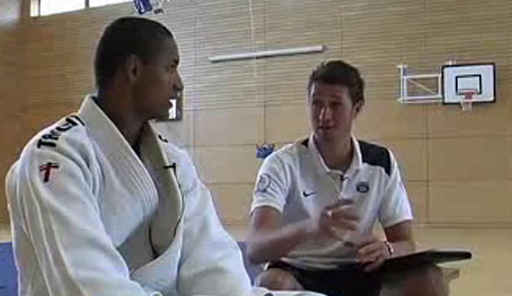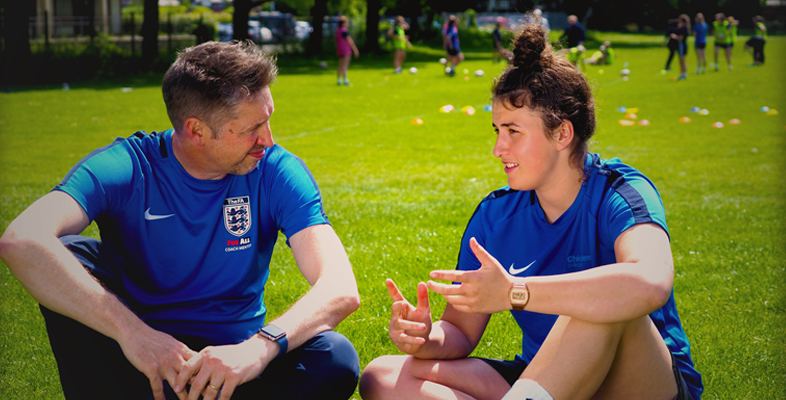5 Discussing feedback and encouraging dialogue
The Chartered Institute of Personnel and Development, in their 2016 report Could do better: assessing what works in performance management, suggests it is not the content of feedback that is important in determining its effectiveness, but how people respond to it. In the next activity you’ll analyse the feedback provided to a judo coach and assess its effectiveness.
The video features Mike, a judo coach, working in a school environment and this may have an influence on the structure and organisation of the feedback provided by Rob, the coach developer.
Activity 5 Discussing feedback to allow constructive dialogue
Watch Video 4. How well do you believe the feedback has been approached? Is this how you would like to receive feedback if you were the coach? Would you respond positively to the feedback and does the video reveal anything about the relationship between the two people involved and the context in which the feedback is being undertaken?

Transcript: Video 4
Discussion
The feedback is taking place in a calm environment and the body language and tone of Rob, the coach developer, appears helpful and sincere. The conversation starts on a positive note as Rob invites Mike, the coach, to reflect on the session by asking some prompting questions.
Before Rob provides his main feedback, he explains what he is doing and opens it by reinforcing some positive points. Mike is then provided with two things he might consider towards furthering his development. The feedback is framed positively, and Rob creates a constructive dialogue.
Aguilar (2013) writing about coaching in educational settings accepts that discussing feedback is an art that takes time to learn. People can be sensitive about receiving feedback on their performance, but she offers several suggestions you may find useful:
- Know the person. Make an effort to know who you are giving feedback to and how you should adapt your feedback accordingly.
- Ground feedback in observational data (for example, ‘you used the word ‘great’ on twelve occasions’; ‘you asked four questions in total’). Ensure you can support your feedback with examples from your observation.
- Keep critical feedback to one or two key points. Focus on the immediate priorities. Try not to overload the coach with multiple areas in which they need to improve.
- Ask for permission. Precede your comments with phrases such as ‘can I share a couple of things with you’, or ‘would it be OK if I suggest this’. This helps to demonstrate that your feedback is coming from a place of care and a desire to help the coach develop.
- Find the phrasing. Think about the language you use to convey your feedback and how the coach will hear you. Remember it is how feedback is received that influences its effectiveness, so you want a coach to hear you positively.
- Invite reflection. Invite the coach to offer their reflection and thoughts. Watch their body language carefully as this can convey how they have responded to your feedback.
The timing of when to provide feedback is also worth considering. Straight after a game or session the coach may be on an emotional high and perhaps this is not always the optimum time for detailed feedback. Instead, if appropriate, leave the coach with a couple of questions to ponder and then arrange to speak over the coming days when they have had a chance to reflect and you to will have thought through your feedback. This might help the coach be more receptive to your comments and open the possibility for a more productive dialogue.
Finally, when do you start to provide feedback to a coach? Aguilar’s first point ‘Know the person’ would suggest that providing feedback to a coach is best begun only when a relationship is established and when you have built an understanding of – and with – the coach. Perhaps you would start to observe but not provide any feedback – any observation does not necessarily require feedback, but you should explain this to the coach so they understand why you are watching them but not intending to provide any subsequent comment. Maybe your first observation could involve watching and focusing on the participants being coached to learn and understand more about them. Again, explain this to the coach and your reasoning for this. These points are reinforced in the next activity where you see how a culture shift towards peer-to-peer observation was developed in education. Could this work effectively in coaching?

